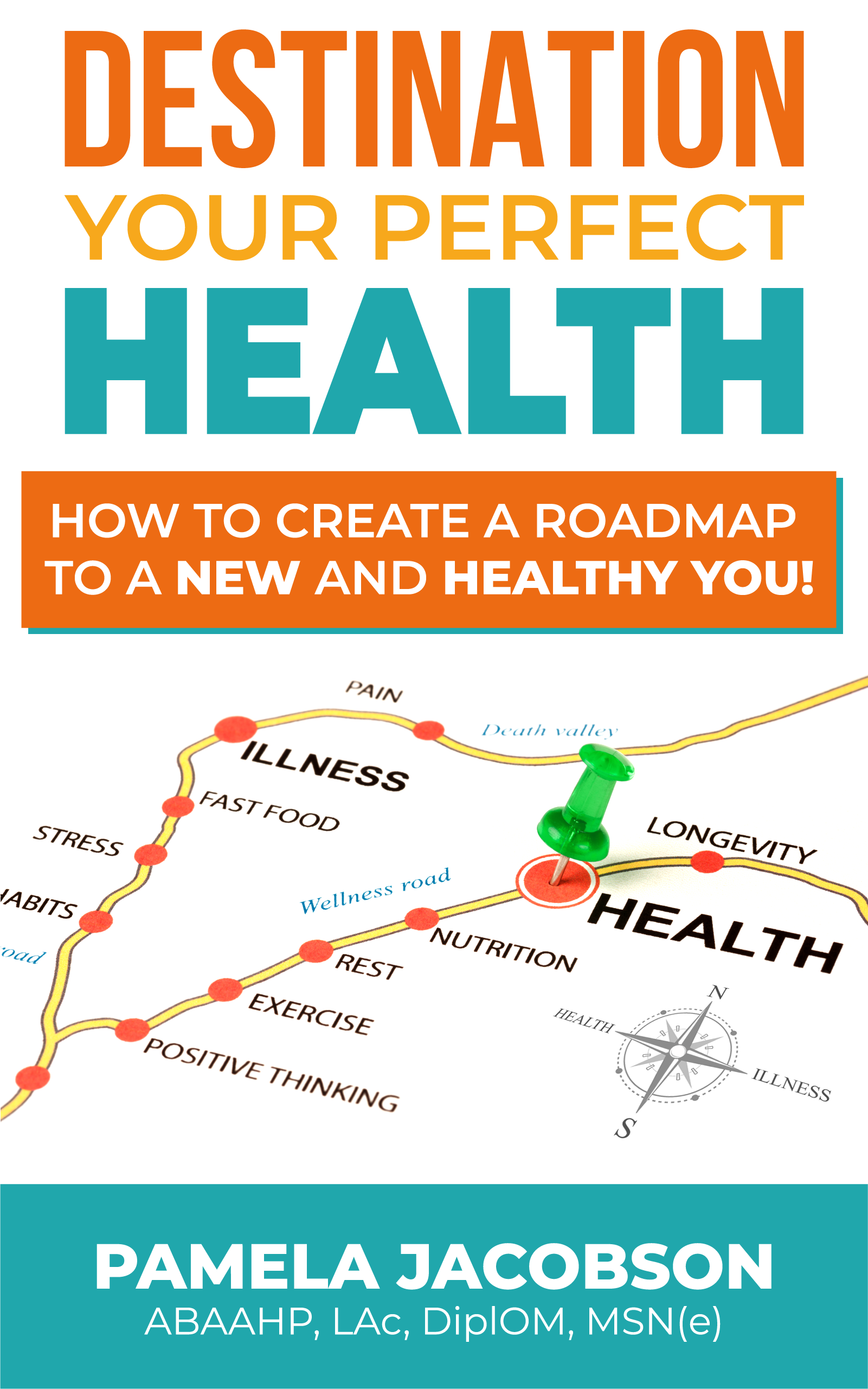
Article by Dr. Grace Soltynski, DAOM, LCSW
We all know that to live a healthy life, we need to exercise and eat more veggies. But what does it take to act on these fantastic goals and maintain them? It takes at least four significant action steps:
1. Set the ultimate goal
2. Commit the path to that goal
3. Write down a functional goal or goals
4. Develop a plan to bounce back from setbacks
Step 1. Set your ultimate goal around your higher values, which guide you back on track when things get tough. Examples include: being healthy; feeling at peace with myself; having the energy to enjoy my life; protecting my body from addictions; stopping stress within seconds.
These ultimate goals are much more positive and more powerful than “I want to lose 20 lbs”.
Visualize and feel being in the state of your ultimate goal every day. This gives your subconscious mind a blueprint of a healthy, successful you that it can follow and start building towards.
The ultimate goal gives your mind and body the positive feeling of already being there in that future place where your health habits are in place and you are feeling great. Not only are you 20 lbs lighter, and capable of maintaining healthy habits, but you have replaced the burden of striving to be successful with already being and feeling successful. Now, you can act and think like a person who has achieved her goals of living a healthy life.
Exercise: Take about 10 minutes to daydream about your future, ideal self. Imagine that six to twelve months have gone by and you have already achieved your health goals. See yourself in a full-length mirror, looking great and emanating energy and self-confidence. Notice the sparkle in your eye. Connect with the feeling of success.
Step 2. Commit to the path that leads to your goal. It is easy to wish for a goal, whether it is to lose weight, earn a degree, run a marathon. But that is a little more than a wish for a new year’s resolution unless you are willing and able to commit to each of the steps on the path to your goal- the daily change in diet and exercise, the years of required courses, the six months or running before you start your marathon.
Exercise: Consider the pros and cons of committing to your goal of improved health. Think about what you will be giving up and the changes you will need to make to maintain healthy habits of exercise and diet. Being aware of the negatives, or ”cons”, at this stage of the effective goal setting process, will decrease the chance of self-sabotage later. By doing this, you are giving voice to those aspects of yourself that will rebel if they are not heard and convinced that the pros of change outweigh the cons.
Step 3. Create a functional goal that tells your brain a specific time when to start the activity and what to do on each step of the path of your goal. For example: I will start walking today at 6 pm. For 20 minutes. I will order a salad for lunch. I will buy and cook fresh vegetables as part of my dinner. I will have apples, and almonds available as snacks.
To be even more effective, mentally rehearse sticking to your commitment even if some event, feeling, thought, or impulse distracts you. For example: I will start walking tonight, even if I start later than planned. I will order a salad for lunch even if friends tempt me with something more fattening. I will cook vegetables tonight even if I feel tired and am tempted to buy fast food.
Exercise: Mentally rehearse showing up for your planned exercise. See yourself starting to exercise or remembering to order a salad. Then notice how internal and external distractions pop up to pull you back to your favorite negative habits- eating pastries, smoking, or going lost in the Internet. Use a deep abdominal breathing technique or yell out loud a Karate shout to refocus your mind on your healthy path and vision. Bring your mind in from self-criticism and self-doubt to a specific positive action step, such as dressing for the gym or a walk. Say to yourself: “Do this now! Start here! Focus!”
Step 4. Develop a plan to bounce back from setbacks. This esential step it often left out of typical methods of setting health goals. Yet it is absolutely necessary to prepare for and rehearse recovering from, inevitable mishaps and setbacks. This step will make you resilient to distractions and will help you persist in the pursuit of your worthwhile health goals.
Exercise: Notice when you are most vulnerable to setbacks such as buying sweets and fattening foods, and what goes through your mind when you decide not to get up from your easy chair an walk. Imagine that during a stressful period, you have slipped and given in to old habits, or missed several days of exercise. Notice, how you feel, and identify any tendency to just give up all the progress you have made. Just notice it, and start building into your brain the determination to continue on your path tomorrow. You can even use a calendar to check off healthy days, skipping over any setback days, and then continue to record and take credit for the next day, you are back on track.
After a setback, you can apply your “even if” strategy from step three: “Even if I fail at my goal today, I will stop self-criticism and quickly move to taking action today. Even if I miss one day of walking, I will climb the stairs that day, walk to the store, and will return to my commitment tomorrow of walking at least 10-30 minutes every day.”
Rehearse recovering from those setbacks so you are prepared with a coping plan of action for each of your favorite default distractions. Replacing setbacks with re-committing to your healthy habits will cause your brain to start building the corrective neural pathways that pull you back into the path to your Ultimate Goal and the healthy vision for your life.
Maintain your health with ongoing commitment to protect your body.
Whenever you are about to eat junk food or are tempted to smoke a cigarette or drink a glass of wine, use this technique:
First, hold up your thumb and declare: This is my body and my life.
Next, press your first finger into your thumb and say: Certain habits, foods, and substances are toxic to my body.
Next, press your middle finger to your thumb, along with your first finger, take a deep abdominal breath, hold it, and declare: I am committed to protecting my body, my life, and my health form all toxic habits and substances.
Finally, exhale and release the pressure. As you allow your commitment to your body, your life and your health become imprinted in your brain-cell memory.
 Dr. Grace Soltynski is a board certified Doctor of Acupuncture and Oriental Medicine (DAOM) in California. She specializes in functional medicine and has successfully supported and treated patients with health problems such as cancer, chronic fatigue syndrome, fibromyalgia, migraines, menopausal symptoms, hormonal imbalance, including polycystic ovary disease, and numerous orthopedic conditions.
Dr. Grace Soltynski is a board certified Doctor of Acupuncture and Oriental Medicine (DAOM) in California. She specializes in functional medicine and has successfully supported and treated patients with health problems such as cancer, chronic fatigue syndrome, fibromyalgia, migraines, menopausal symptoms, hormonal imbalance, including polycystic ovary disease, and numerous orthopedic conditions.
Learn more about her current program Total Weight Loss Cure.
